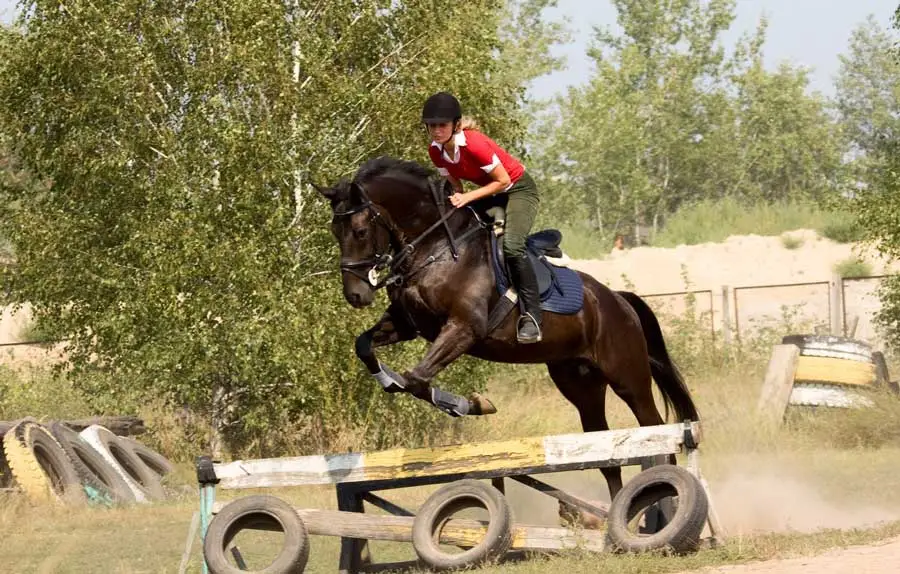Fence boards provide a beautiful landscape of the field you have and also ensure the safety of horses. Now your wood fence is popular because it is cheap and wood suits the nature around your land and with horse color beautifully.
But the major question comes when we get confused about the 3-board vs. the 3-board fence.
Basically, 3 boards and 4 boards are fence styles you can have for your horse’s safety. While 3 boards offer more visuality because both 3 boards and 3 boards cover the same height the gap between the boards is more for 3 boards more and often.
We rarely see any other animals like cattle goats or sheep inside the horse fence, but if you keep other cattle on your horse farms, then a 4 board fence is a good option. Because it will work more like a cattle fence than a horse fence.
Objectives of fence
The fence is needful, no doubt about it. No one wants their horse to go grazing on someone’s land. Horses like to roam inside the fence and it comes to them as a solid barrier in their eyes. Painted boards are very much visible to horses and look beautiful from the outside.
The wood fences are made of oak wood or treated pine. These woods then go through a treatment process that enhances their aesthetic beauty and longevity. Sometimes coal tar is used to protect the board wood from worms and the black fences look stunning too.
3 board fence
So a wood fence has two different styles, 3 boards, and 4 boards. For a 3-board fence, we need three boards which we keep horizontally. This style of fence is safe enough for horses and highly visible.
See also: Looking for a portable electric fence? Read this article for details about electric fences. Let’s go and valuable information.
4 board Fence
The 4-board style is popular because it is a little higher than 3-board fences and is made of oak boards, pine wood, etc. However, the board fence provides more security and doesn’t allow horses to see behind the fence. So they don’t cross it by jumping.
Different fence spacing for board fence
No matter which wood you use for fences like black wood fences, oak fences, or picket fences, to maintain quality fences you must ensure an ideal spacing for board fences. If you don’t keep the idea spacing, then your fence will look really weird from the outside. Let’s see the different spacing for the board fence.
3 Board fence spacing
First, for nailing the lumber on the post, we must know how deep we should bury the posts. For 3 board fences, posts should be longer at least 8 feet. So 3 feet will go under the ground and the rest of the 5 feet above the ground level. The five feet posts will stop horses from escaping. We suggest you get pressure-treated wood that lasts longer than normal lumbers.
Related article: Save time and money by using our innovative horse fence cost calculator. Our AI-powered tool quickly generates an estimate that you can trust.

We recommend you use a specific size of lumber boards of 1 by 6 by 8 inches. But you can change your board size according to your choice and post gap. Now come to the spacing, as the posts will have 5 feet= 60 inches above the round, so you can easily select a spacing (60/3 inches) for 3 boards.
But maintaining this spacing is tough because either you have to nail a post on the ground level or if you keep 20 inches spacing from the ground, the top board will be at the top of the post, which looks pretty awkward.
That’s why we prefer to leave 7.5 inches clearance from the ground and 7.5 inches from the top of the post, in total 15 inches.
Now the remaining 45 inches will be divided by 3 lumbers and 15 inches for each. If a lumber’s width is 8 inches, the gap between the board will be up to 7 inches, which is quite similar to 7.5 inches. So your fence will look like a standard board fence.
Also, you can make 3 board fences with wire by adding a steel net or wires over the fence to keep the place safe from sheep, goats, dogs, etc.
How to build a 3-board Fence?
In constructing a 3-board fence, one must first gather necessary materials such as wooden boards, nails, and measuring tape. The individual should measure the desired area for the fence and mark the locations for the fence posts accordingly.
Next, holes should be dug at each marked spot to accommodate the posts. These holes should be deep enough to ensure stability.
Once the holes are prepared, the posts can be inserted and secured firmly with concrete or gravel. After allowing sufficient time for the posts to set, the wooden boards can be attached horizontally to the posts, ensuring they are evenly spaced. Nails are typically used to secure the boards to the posts, ensuring a sturdy and durable fence.
Finally, the fence should be inspected for any loose or protruding nails, and adjustments should be made as necessary. Following these steps will result in the successful construction of a 3-board fence.
See also: Don’t buy flex fence before reading these reviews! See what others say about this product and make an informed decision.
4 Board fence spacing
If you understand 3-board horse fence spacing, then 4-board horse fence spacing won’t be tough on you. For 3 board fences, we suggest you keep 8 feet or fewer gaps between posts to make the fence stronger. But for a 4-board fence, you can have 10 feet of distance between posts.

Now, in this case, 4 board fence height requires 10 feet long posts, 4 feet will go under the ground and 6 feet will be on the ground. As 6 feet= 72 inches. So you’ll leave 6 inches clearance from the ground and 6 inches clearance from the top of the post. Now you have 72- (6+6) = 60 inches remaining.
For 4 board fences, we suggest you have fewer width lumbers, like 7 inches. But it doesn’t matter if you use the same width 3 board lumbers 8 inches. You will have either 7-inch or 8-inch spacing between the boards and 6 inches of clearance from both the top and bottom of the posts.
A 4-board fence with wire is not that popular, because the space is too narrow for other cattle to enter the pasture.
Kentucky board fence
If you want your pasture to look amazing, then there’s no other way to use Kentucky board fences. The Kentucky boards are mostly yellow pine lumbers treated with environmentally friendly chemicals for above-ground use. That’s why Kentucky boards are 30% stronger than normal oak lumbers.
Kentucky 4 board fence height can be quite similar to a normal oak wood board fence, but the height is sometimes smaller. Because the width of the Kentucky boards is less. However, we recommend you hire expert installation crews or fence contractors if you are not an expert in fences.
See related article: Looking for information on whether it’s illegal to use horses as transportation? This article will provide you with quick facts on this topic.
FAQs
How tall is a 3-board fence?
The 3 board fence posts are mostly 8 feet or less tall. But above the ground, the height is about 5 feet tall.
How tall is a 4-board fence?
4 board fences need higher posts and need to be tall. It needs a minimum of 6 feet above the ground and a maximum of 8 feet.
How tall should a 4-rail fence be?
Rail fences are not like board fences. The rails have less width than the boards. So spacing needs to be maintained exquisitely. Normally the 4-rail fence is 5 feet tall.
What size boards are used for fence rails?
Mostly the depth of the wood remains between 1-2 inches and the width remains between 4-6 inches. The ideal length of the lumber for the fence is 8 feet.
Conclusion
Finally, hopefully, you guys have a great idea about a board fence for the horse pasture. Also don’t forget to use pressure-treated pine boards on the gates, because the gate’s wood must be stronger.
If you find it hard to find out how many posts and lumbers you may need, ask an expert who will give you an idea about it through a 3-board or 4-board fence calculator.
It’s time to make a great fence for your pasture. Have a great journey!



